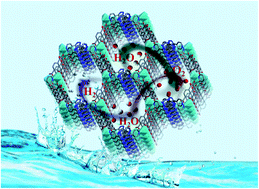Accurately metal-modulated bimetallic metal–organic frameworks as advanced trifunctional electrocatalysts†
Abstract
To fabricate efficient multifunctional electrocatalysts for energy storage and conversion is still a great challenge, due to the difficulty in precisely identifying and regulating catalytic active sites. Herein, a series of isostructural metal–organic frameworks (MOFs) with V-shaped trinuclear clusters was used as an ideal model to investigate the activity of trifunctional electrocatalysis for the hydrogen evolution reaction (HER), oxygen evolution reaction (OER) and oxygen reduction reaction (ORR), as these clusters contain both coordination unsaturated metal sites (also known as open metal sites, OMSs) and coordination saturation metal sites (CSMSs), corresponding to both ends and the middle of the V-shaped cluster, respectively. Using a combination of single-crystal X-ray diffractometry, Mössbauer spectroscopy and theoretical calculations, the accurate metal sequence of trinuclear clusters and the regulation effect of the active sites were identified, revealing that the adjacent inactive site plays a significant role in regulating the catalytic performance of the endmost active site. The proposed model of metal cluster-based electrocatalysts facilitates the investigation on efficient multifunctional electrocatalysts as well as the related catalytic mechanisms.



 Please wait while we load your content...
Please wait while we load your content...